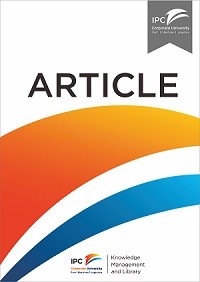Article
An analysis of ship escort and convoy operations in ice conditions
Winter navigation is a complex but common operation in the Northern Baltic Sea areas. In Finnish waters, the safety of the wintertime maritime transportation system is managed through the Finnish–Swedish winter navigation system. This system results in different operational modes of ship navigation, with vessels either navigating independently or under icebreaker assistance. A recent risk analysis indicates that during icebreaker assistance, convoys operations are among the most hazardous, with convoy collisions the most important risk events. While the accident likelihood per exposure time is rather low, accidents occur almost every winter. Even though these typically lead to less serious consequences, accidents leading to ship loss and oil pollution have occurred and may occur in the future. One aspect of ship convoy navigation in ice conditions is the distance kept between the icebreaker and the ships in the convoy, a form of the well-known ship domain concept. While operational experience naturally is a valuable source of information for decision making about the distance of navigation in convoys, systematic analyses are lacking. The aim of this paper is to investigate selected operational aspects of convoy navigation in ice conditions in the Finnish waters of the Gulf of Finland, based on data of the Automatic Identification System and sea ice hindcast data. Focus is on obtaining qualitative and quantitative knowledge concerning distances between vessels in escort and convoy operations and the respective transit speeds, conditional to ice conditions. Such empirical knowledge can support operational decision making, contributing to wintertime maritime safety.
Ketersediaan
Informasi Detail
- Judul Seri
-
Safety Science
- No. Panggil
-
ATC LO GOE a
- Penerbit
- Finlandia : Elsevier.,
- Deskripsi Fisik
-
12p
- Bahasa
-
English
- ISBN/ISSN
-
0925-7535
- Klasifikasi
-
LO
- Tipe Isi
-
-
- Tipe Media
-
-
- Tipe Pembawa
-
online resource
- Edisi
-
2016
- Subjek
- Info Detail Spesifik
-
-
- Pernyataan Tanggungjawab
-
Floris Goerlandt
Versi lain/terkait
| Judul | Edisi | Bahasa |
|---|---|---|
| Maritime safety culture in Europe | Volume 46 Number 1 2004 | en |
Lampiran Berkas
Komentar
Anda harus masuk sebelum memberikan komentar

 Karya Umum
Karya Umum  Filsafat
Filsafat  Agama
Agama  Ilmu-ilmu Sosial
Ilmu-ilmu Sosial  Bahasa
Bahasa  Ilmu-ilmu Murni
Ilmu-ilmu Murni  Ilmu-ilmu Terapan
Ilmu-ilmu Terapan  Kesenian, Hiburan, dan Olahraga
Kesenian, Hiburan, dan Olahraga  Kesusastraan
Kesusastraan  Geografi dan Sejarah
Geografi dan Sejarah